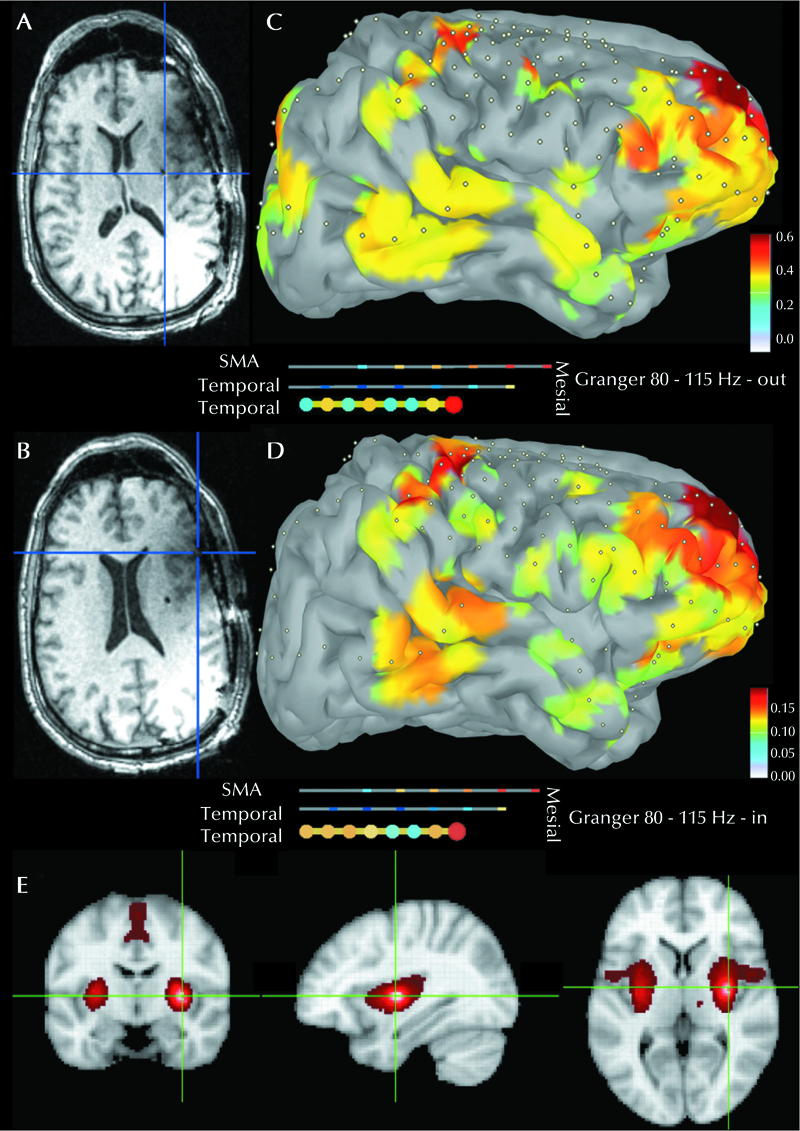Epileptic Disorders
MENUThe neural networks underlying the illusion of time dilation: case study and literature survey Volume 24, issue 3, June 2022
Figures
- Key words: electrical cortical stimulation, human brain network, human brain mapping, time perception, time dilation, illusion, human brain
- DOI : 10.1684/epd.2022.1428
- Page(s) : 589-93
- Published in: 2022
This is the first known case report of a profound illusionary time dilation produced by direct electrical cortical stimulation. The patient with drug-resistant epilepsy was undergoing invasive EEG evaluation for the localization of the focus prior to resection. Stimulation of the non-dominant claustrum/insula and inferior right frontal gyrus correlated with the equivalent of a pacemaker of an internal clock in the brain. The site exhibited strong outflow connectivity with a wide region of the right fronto-parietal executive network and pre-motor system. The patient described the experience as unique and fascinating, and underwent resection involving the face motor area where seizures arose from, with a substantial decrease in seizure burden >90%. Extensive brain networks are employed in evaluation/assessment of time, which may be modulated via electrical stimulation. This is the first of such an incident. Further studies may investigate the potential benefit of neuromodulation of these brain regions in the management of conditions in which time-perception may be impaired.


